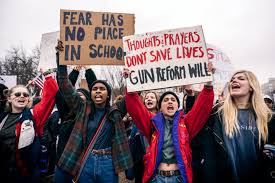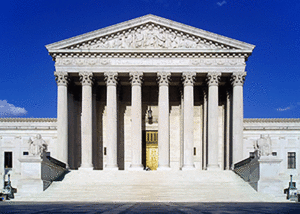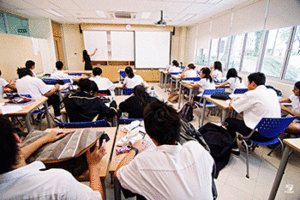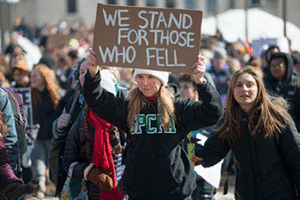Educators as Communicators: How Administrators Can Channel Their Inner PR Pro
Published on April 10, 2018, at 10:53 p.m.
by Greta Banks.
In the wake of the Parkland high school shooting, students are leading a new wave of activism calling for greater gun control and government response to mass shootings.

On March 14, 2018, the Women’s March Youth organized a 17-minute national school walkout that saw thousands participate across the U.S. On March 24, students led the March for Our Lives in Washington, D.C., where a crowd of more than 200,000 people gathered on Capitol Hill to demand change. The #NeverAgain movement, created by Parkland survivors, has garnered international support and celebrity attention, and with the National School Walkout scheduled for April 20 — the 19th anniversary of the Columbine massacre — it shows no signs of slowing.
This movement has saddled school administrators with the delicate duty of responding to their students’ efforts to engage in the protests. With the amount of attention the movement has amassed, the good and the bad have been widely publicized. Between safety and civil rights concerns, and the acute public attention, administrators need to start thinking like public relations professionals to keep up with the increasingly political school environment.
Know the law first:
“What we have to look at in this environment is the classic case law here, Tinker v. Des Moines,” said Dr. William Nevin, adjunct journalism instructor at The University of Alabama who wrote his dissertation on violent student speech. “That gives us a rule that says, where student speech does not cause a material and substantial disruption to school operations, it is otherwise protected speech. What school administrators sometimes forget is that their students are citizens living in a democracy, and as citizens in a democracy, they have First Amendment rights.”

Supreme Court Justice Abe Fortas established this point in the Tinker v. Des Moines opinion by stating, “It can hardly be argued that either students or teachers shed their constitutional rights to freedom of speech or expression at the schoolhouse gate.”
Nevin, however, emphasized that it is important to understand that school walkouts are comprised of two distinct aspects: the physical act of missing class and the political message behind it.
“If you decide to skip school or walk out of class to express an opinion, we have a physical act of not being in attendance of class when you are otherwise supposed to, and then we have a speech message behind that — you are protesting inaction on gun violence,” said Nevin.
So, while the speech aspect of a political walkout is protected, the action of missing class is not.
“From a legal standpoint, engaging in civil disobedience doesn’t immunize yourself from consequences,” said Randall Marshall, executive director for the ACLU of Alabama. “There’s no First Amendment right to walk out of class and go outside during the school day; the First Amendment doesn’t allow you to disobey rules that are already in place.”
For school administrators, this means that the punishment for students participating in walkouts cannot exceed that of any other absence.

“If an administrator says, ‘OK, you walked out of class, so you went outside without authorization, [and now] you’re on school suspension for a week,’ but they punish an unexcused absence by a one-hour detention, then I think you’ve got a First Amendment violation because you’re punishing the same kind of behavior, but differently because of the speech involved,” said Marshall.
“You can assess some type of administrative penalty for an absence, but otherwise you are treading on dangerous ground,” Nevin agreed.
Legal compliance is simply the baseline for a response. According to Marshall, schools and administrators should seek to use these instances as learning opportunities.
“A school that seizes upon the opportunity to allow students to channel their frustration or their desire to speak out on a current hot issue ultimately does more for their students than those who try to pretend there’s not a world around them,” said Marshall.
So, what is the best way for schools to seize such opportunities?
Apply best practices:
“The absolute best practice is when your school leadership team — your sight level team, your principal — is sitting with students and student leaders, and they agree to the proper practice and they agree to, ‘Here’s how we will recognize the issue at hand,’” said Dr. Joseph Erardi, a professional educator and leader for more than 37 years, Newtown superintendent from 2014 to 2017, and Connecticut’s 2017 Superintendent of the Year.

According to Erardi, a number of schools did endorse a predetermined form of participation, like requiring students to bring signed walkout permission slips from parents, turning the walkout into an assembly, and more. However, Erardi said the real issue arises when a small number of students deviate from the agreed-upon plan.
“Students who are in that same school where there’s a plan, and they choose to do something totally different than the plan, that’s when you end up with administrators scratching their heads saying, ‘Now what’re we going to do?’,” said Erardi.
In answer to that question, Erardi recommends restorative practice over more punitive measures like a suspension.
“Without that suspension, there’s a consequence (restorative practice),” said Erardi. “It’s educational in sense; it’s not the angry student coming back after being suspended for two days and now there’s a rage.”
In addition to the positive impact this method has on students, it also saves schools from facing public criticism over imposing punishments.
For Erardi, however, listening is still the best thing that administrators can do.
“I think that’s where we’re at right now; you have to know your kids, you have to know your most complex kids, and they have to believe you’re listening, and you have to believe that they’re listening, too,” Erardi explained.




